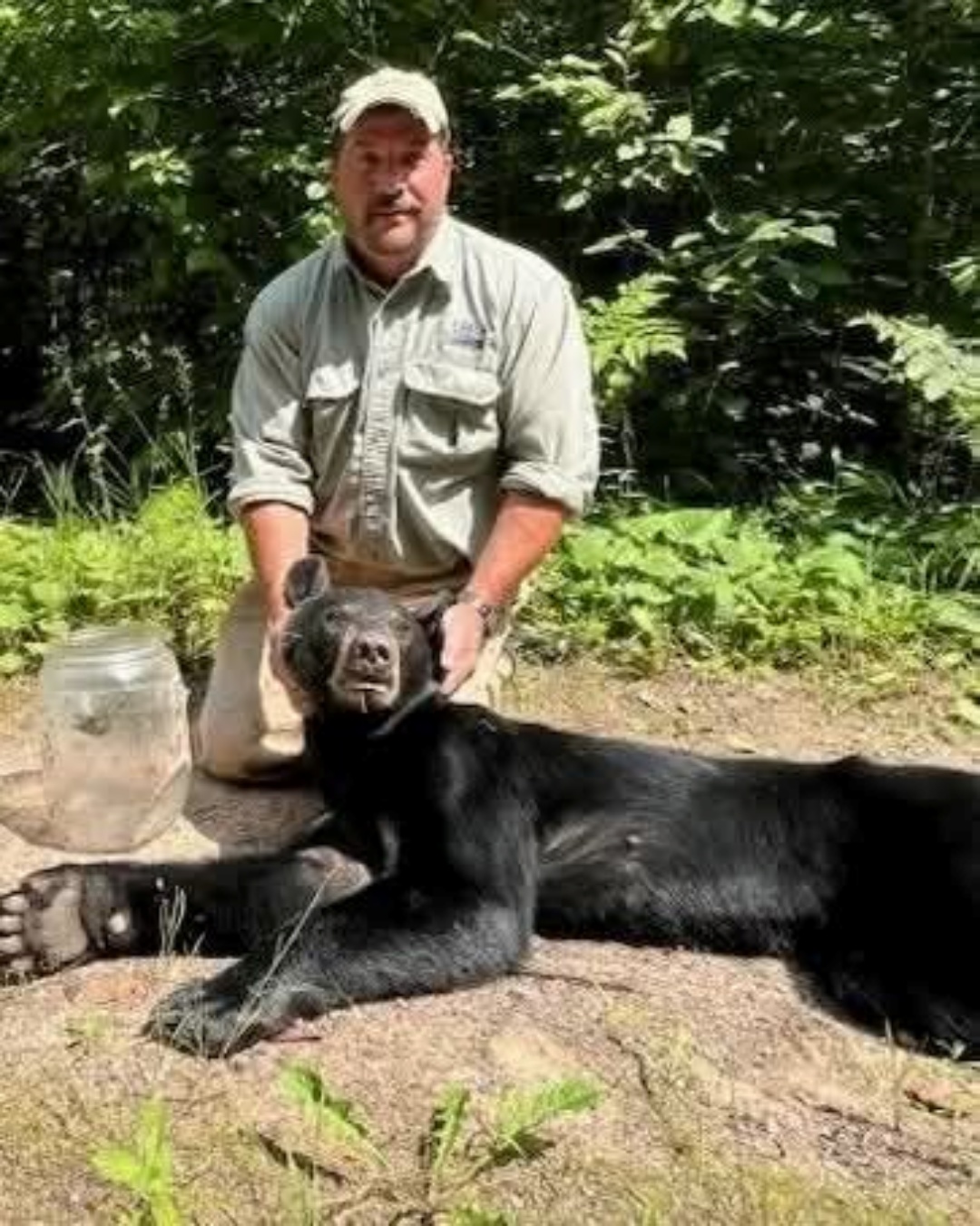For nearly two weeks, a young female bear wandered through the forest with a cruel burden she could not understand: a large plastic jar stuck firmly over her head. What should have been her world of scents, sights, and survival had been reduced to darkness, confusion, and panic. She could barely see, struggled to drink, and could only eat the scraps of food that somehow managed to reach her mouth. Each step was a battle; every rustle of leaves a potential danger she could hardly navigate.
Despite her weakness, the bear refused to stop. She moved tirelessly across miles of forest, desperate for relief, always managing to stay just out of reach of those who sought to help. Wildlife authorities had set up live traps, hoping to catch her safely, but she always seemed one step ahead. Tracking reports marked her location repeatedly, only to find her vanished again, slipping silently between the trees like a shadow in motion.
Days turned into nights, and the forest grew colder. Hunger gnawed at her ribs, and thirst burned her throat. Yet her instinct to survive remained unbroken. She pressed forward, driven by a combination of fear, confusion, and sheer will. Every sound—the snap of a twig, the call of a distant bird—was amplified in her trapped, jarred world. The once vibrant, curious bear had become a creature of desperation.
Then, finally, a glimmer of hope appeared. A family at their cabin noticed her from a distance: a small, thin bear stumbling awkwardly, her head encased in the opaque plastic jar. Alarmed, they observed her carefully, noting her struggles. She was weaker than ever, and it was clear she could not survive much longer like this. Without hesitation, they called the wildlife authorities and remained vigilant, keeping the bear in sight, gently guiding her away from hazards without startling her further.
Help arrived. The trained wildlife team approached with caution, understanding both the danger and urgency of the situation. With precision and care, they darted the young bear, ensuring she would not panic or injure herself during the rescue. And then, with hands steady but hearts racing, they removed the jar. For the first time in nearly two weeks, she could see the world clearly, breathe freely, and drink without obstruction. Remarkably, she bore no injuries—only signs of starvation and dehydration that spoke to her harrowing journey.
After a period of monitoring and care, she was relocated to a quiet, abundant section of the forest. There, the young bear awakened to a world full of color, sound, and life once again. She sniffed the air, stepped gingerly on the soft forest floor, and nibbled at the ripe berries that grew freely. Slowly, she regained her strength, each bite a reminder of the resilience and determination that had carried her this far. Then, with a final glance at the humans who had saved her life, she trotted deeper into the woods, free at last.

Her story spread quietly, a testament to survival, compassion, and the fragile intersection between humans and wildlife. For nearly two weeks, a jar had trapped her, but it had not broken her spirit. And in the end, a combination of human vigilance, expertise, and empathy ensured that this young bear could continue her life in the forest she was meant to roam—a life saved just in time.
